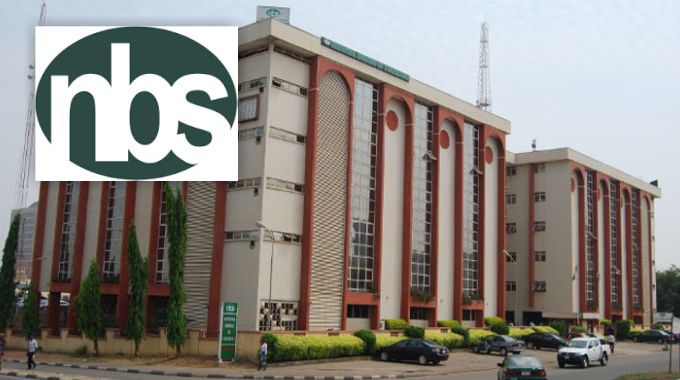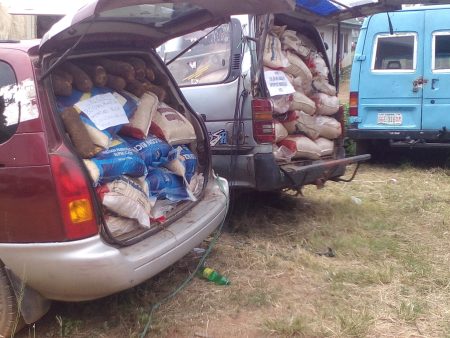The National Bureau of Statistics (NBS) of Nigeria released its rebased Consumer Price Index (CPI) for January 2025, revealing a significant rise in the general price level of goods and services. With 2024 as the new base year, the headline inflation rate reached 24.48%, indicating a substantial increase compared to January 2024. The rebasing exercise, aimed at reflecting current economic realities and consumption patterns, involved updating the CPI structure to encompass 934 product varieties across 13 divisions and adjusting the weighting structure to account for shifts in consumer spending. The new data paints a detailed picture of inflationary pressures across various sectors of the Nigerian economy, highlighting the disproportionate impact on certain goods and services and the divergence between urban and rural inflation trends.
The NBS report revealed a wide range of inflation rates across different product categories. Alcoholic beverages, tobacco, and narcotics topped the list with a staggering 14.80% inflation rate, followed by restaurants and accommodation services at 14.14%. Transport and clothing and footwear also experienced double-digit inflation, registering 12.77% and 12.73% respectively. Other sectors experiencing notable price increases included personal care, social protection, and miscellaneous goods and services (12.04%); furnishings, household equipment, and routine household maintenance (11.48%); and health (9.42%). Food and beverages, while still maintaining a high weight in the CPI basket, saw a more moderate inflation rate of 10.64%, reflecting the ongoing rise in staple food prices.
On the lower end of the inflation spectrum, education and insurance and financial services recorded the lowest rates at 4.88% and 4.65%, respectively. Information and communication, which received a higher weight in the rebased CPI, registered a 7.54% inflation rate. Housing, water, electricity, gas, and other fuels saw a 7.61% increase, while recreation, sport, and culture experienced a relatively moderate 6.85% inflation. This detailed breakdown of inflation across various sectors provides valuable insights into the specific areas experiencing the most significant price pressures, enabling policymakers to target interventions effectively.
A key observation from the NBS report is the disparity in inflation rates between urban and rural areas. Urban inflation reached 26.09%, considerably higher than the rural inflation rate of 22.15%. This difference suggests that urban centers are facing more acute price pressures, potentially driven by higher costs in sectors like housing, transportation, and restaurant services. This urban-rural divide underscores the need for tailored policies that address the unique challenges faced by different geographical areas. Further research is needed to pinpoint the specific factors contributing to this divergence and to formulate appropriate responses.
The rebasing of the CPI introduced significant methodological improvements to enhance the accuracy of inflation tracking. A notable advancement was the full digitization of data collection, replacing traditional paper-based surveys with Computer-Assisted Personal Interviewing (CAPI) devices. This transition allows for real-time transmission and verification of price data, improving data quality and timeliness. The switch to CAPI also reduces the risk of human error and accelerates the data processing timeline, allowing the NBS to publish more up-to-date and reliable inflation statistics. These enhancements contribute to a more robust and accurate representation of the country’s economic landscape.
The high inflation rate observed for alcoholic beverages and tobacco can be attributed to a confluence of factors. Excise duties, implemented to discourage consumption and generate revenue, play a significant role in driving up prices. Fluctuations in the exchange rate also impact the cost of imported ingredients and finished products. Furthermore, rising production costs, including raw materials and labor, contribute to the upward pressure on prices. Finally, supply chain disruptions, both domestic and global, can exacerbate price increases by limiting the availability of goods. Understanding these intertwined factors is crucial for developing targeted policies to mitigate the impact of inflation on these specific commodities. Further analysis is needed to quantify the contribution of each factor and to explore potential mitigation strategies.
Beyond the national figures, the rebased CPI also reveals shifts in the relative cost of living across different states. Imo State emerged as the most expensive state in Nigeria following the rebasing exercise, displacing Bauchi, which had held the top spot for seven consecutive months. This change reflects the impact of the updated methodology, including the change in the base year, the revised weighting structure, and the expansion of the consumer basket to better reflect current household spending patterns. These shifts in the cost of living across different states underscore the importance of the rebasing exercise in providing a more accurate and granular view of the Nigerian economy. The new data allows for a more nuanced understanding of regional economic disparities and informs policy decisions at both the national and state levels.














